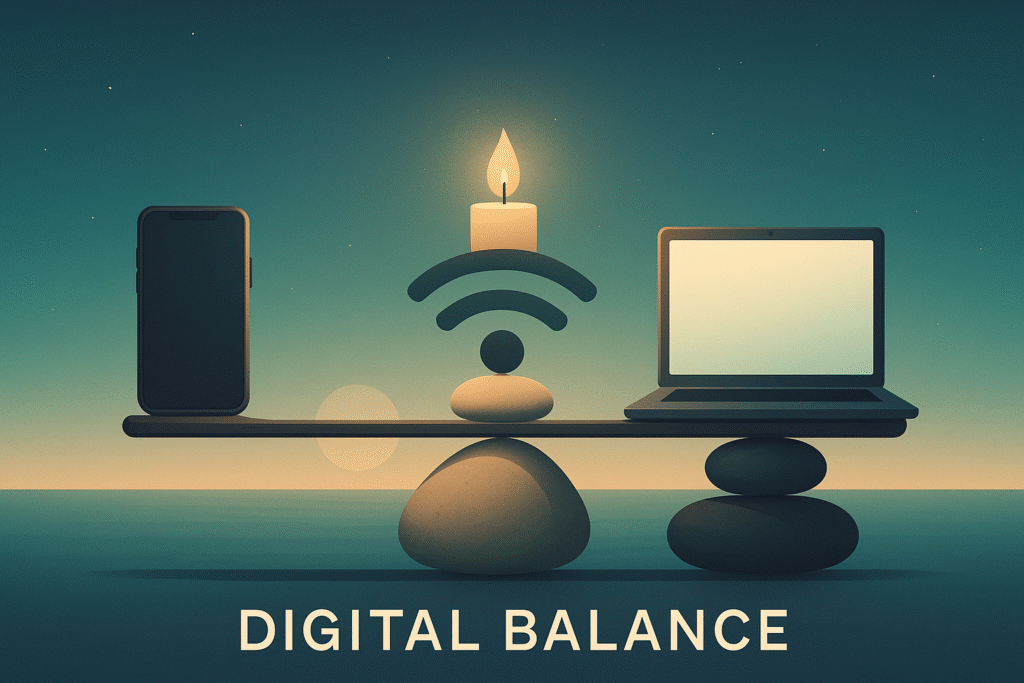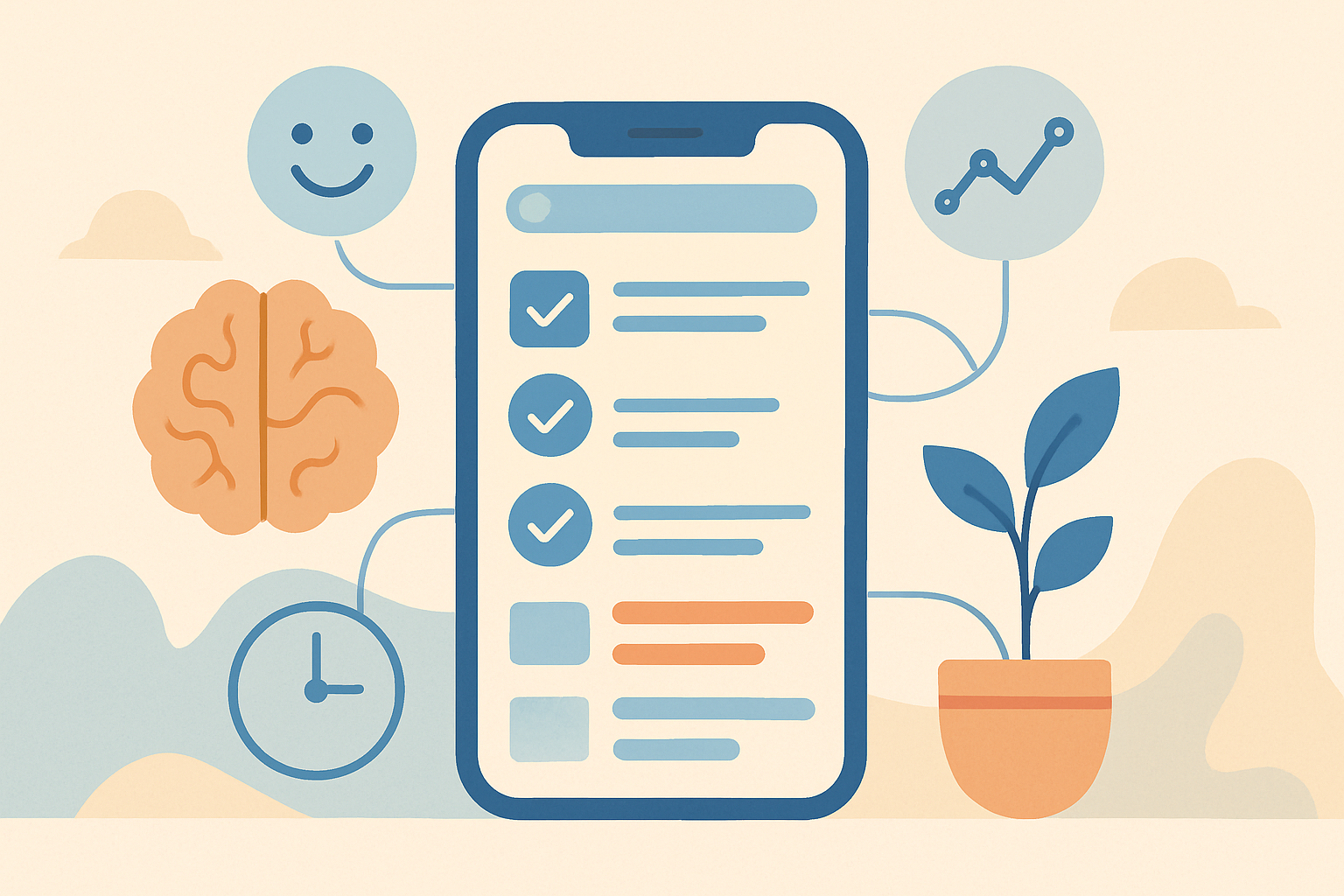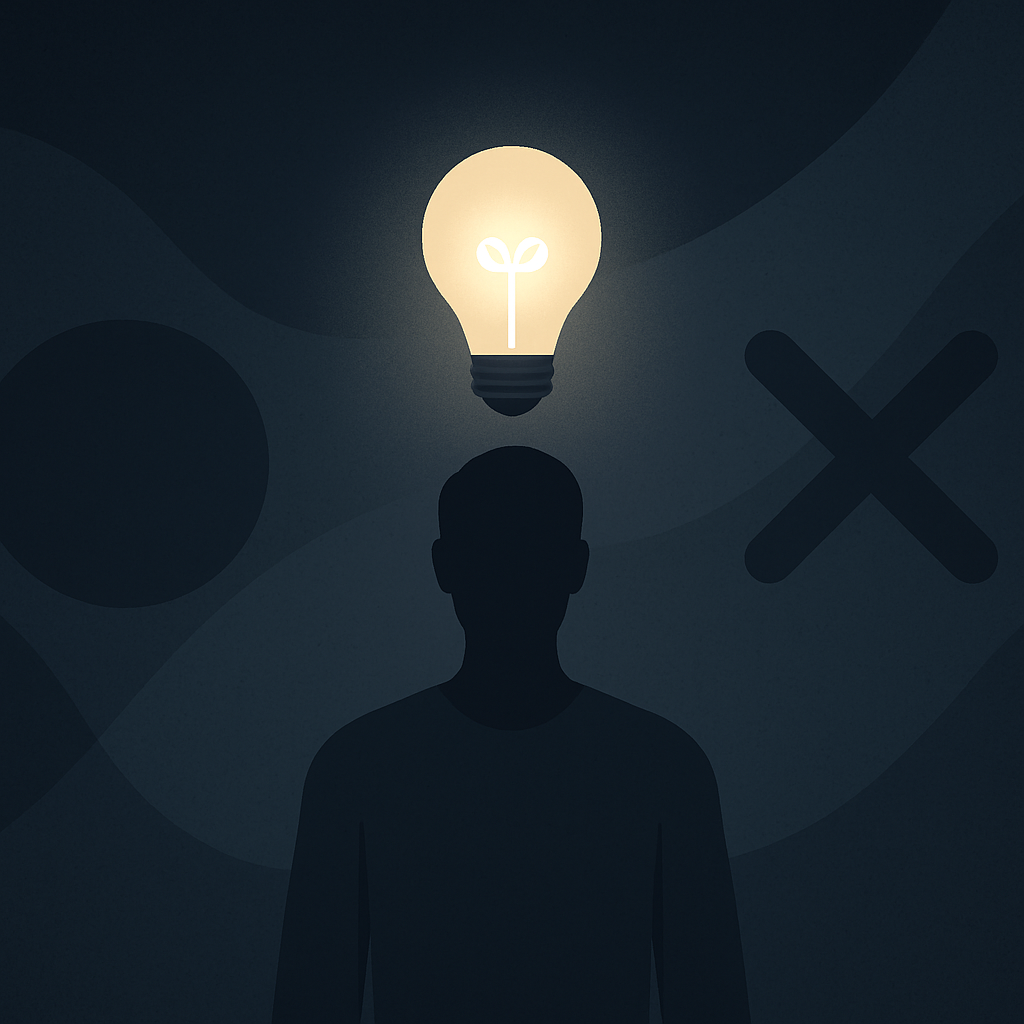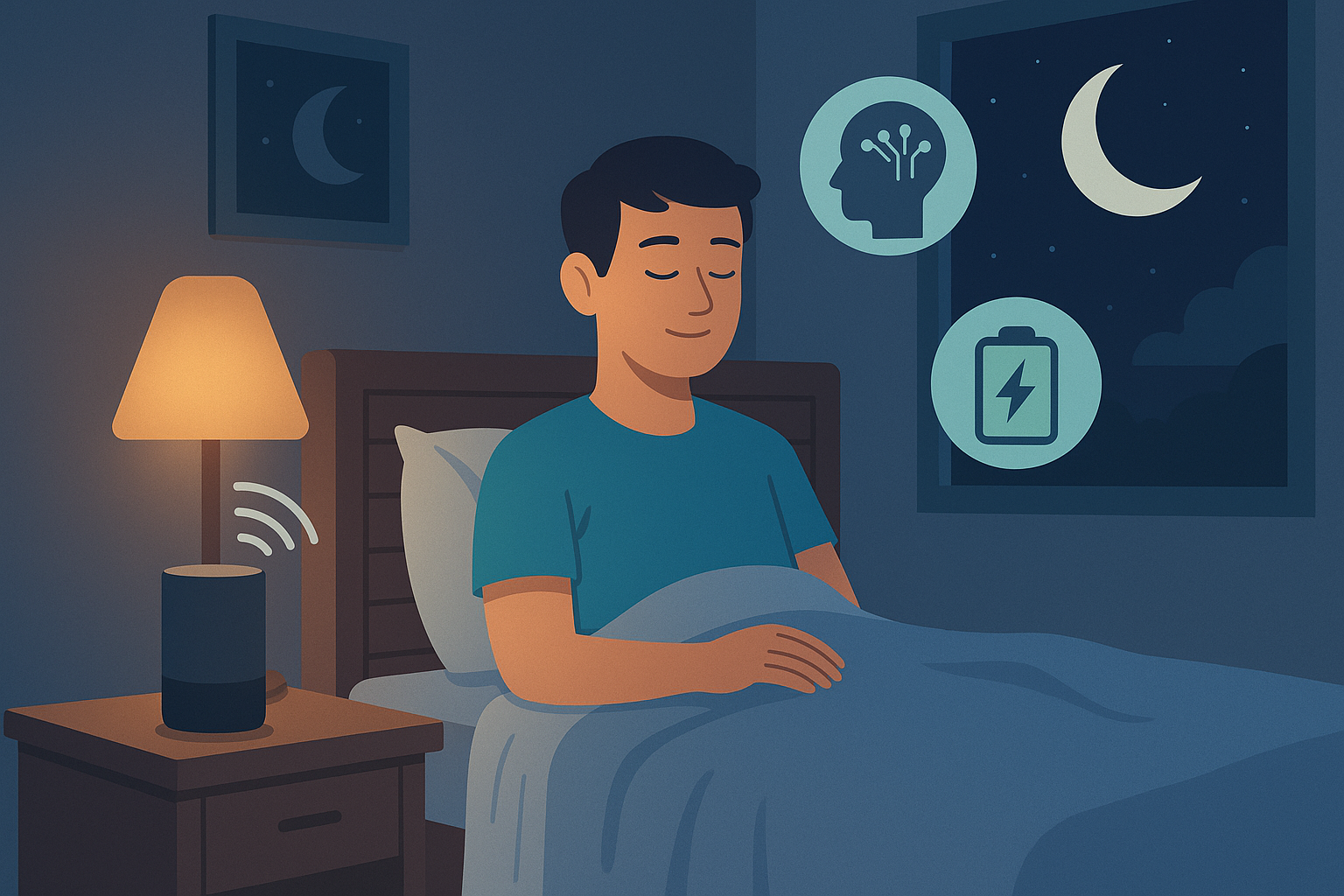Digital Balance Technology connects us, empowers us, and gives us more access to knowledge than any generation before.
But it also demands something in return — our attention.
In an age where every ping, scroll, and notification competes for mental space, digital balance has become a survival skill.
The problem isn’t technology itself — it’s the way we’ve learned to interact with it.
And now, artificial intelligence is helping us rewrite that relationship.
Digital balance is no longer about escaping screens. It’s about using them consciously.

Understanding Digital Imbalance
Our brains were never designed for constant stimulation.
The average person now checks their phone over 150 times per day, often unconsciously. Each small interruption fractures concentration and contributes to what neuroscientists call “cognitive fatigue” — a gradual erosion of mental clarity caused by overstimulation.
When we operate in this state, our thinking becomes reactive instead of intentional.
Focus fades.
Creativity diminishes.
Rest no longer feels restorative.
Digital balance means reclaiming that mental alignment — the space where focus, calm, and connection coexist.
Artificial intelligence is becoming the key to achieving it.
How AI Is Redefining Digital Balance
AI has often been blamed for deepening digital dependency, but it’s now being used to reverse it.
By learning your behaviors, habits, and rhythms, AI systems can identify when connection turns into overload — and intervene before burnout hits.
Example:
- Motion automatically restructures your day when it detects schedule congestion, balancing deep work with recovery.
- Reclaim AI protects time for focus and reflection, preventing meetings from eroding creative hours.
- Notion AI helps declutter digital spaces by summarizing notes and identifying redundant information.
These tools represent a new paradigm — AI-driven digital balance — where intelligent systems don’t demand attention, they defend it.
| Function | AI Role | Impact on Digital Balance | Example Tool |
|---|---|---|---|
| Schedule awareness | Detects overload | Prevents task fatigue | Reclaim AI |
| Information synthesis | Simplifies input | Reduces mental clutter | Notion AI |
| Cognitive mapping | Monitors focus | Promotes mindful rhythm | Motion |
| Reflective journaling | Enhances awareness | Restores perspective | Mindsera |
Instead of fighting technology, you collaborate with it to create cognitive harmony.
The Psychology of Digital Balance
The human brain is wired for novelty.
Each new notification delivers a micro-dose of dopamine — a chemical reward that reinforces the habit of checking.
AI can break this loop by learning your reward patterns and designing healthier alternatives.
For example, instead of constant alerts, your AI assistant could cluster notifications into mindful intervals, allowing you to check updates only when your brain is naturally ready to shift attention.
This approach aligns with what psychologists call “cognitive pacing” — managing stimulus flow in sync with natural mental rhythms.
The result: higher satisfaction, lower anxiety, and a renewed sense of control over your digital environment.
Example: A Day of Balanced Connectivity
7:30 AM — Your AI system measures sleep quality and delays non-urgent notifications until mid-morning.
9:00 AM — Reclaim AI blocks your deep work window, ensuring uninterrupted flow.
1:00 PM — Mindsera prompts a brief digital reflection: “Are you creating or consuming right now?”
5:30 PM — Motion automatically shifts upcoming meetings to protect recovery time.
Evening — Notion AI summarizes your digital activity, highlighting where most of your mental energy went.
This is digital balance in practice — a seamless blend of awareness, rhythm, and rest designed by technology, not dictated by it.
Table: Key Components of Digital Balance
| Component | Description | AI Support | Result |
|---|---|---|---|
| Attention | Control of mental input | Motion | Sustained focus |
| Emotion | Emotional tone awareness | Mindsera | Lower anxiety |
| Structure | Time and task alignment | Reclaim AI | Balanced workload |
| Reflection | End-of-day insight | Notion AI | Self-awareness |
AI transforms balance from a vague goal into a measurable, adaptive process — one that evolves with your habits and priorities.
The Role of Environment
Digital balance doesn’t happen on screens alone — it happens in context.
AI-integrated systems are beginning to shape physical spaces that adapt to mental states.
Imagine a workspace that senses cognitive fatigue and automatically adjusts lighting, temperature, and ambient sound to maintain focus.
Or a home environment that transitions you smoothly from productivity to rest through sensory cues.
These are the principles of ambient intelligence — technology that enhances well-being by blending seamlessly into your surroundings.
The more invisible it becomes, the more human it feels.
Emotional Health in the Digital Era
Digital overload isn’t just cognitive — it’s emotional.
Constant comparison, overstimulation, and algorithmic pressure contribute to rising levels of anxiety and low self-worth.
AI tools like Mindsera and Reflectly use language processing to detect emotional patterns in your writing and provide gentle interventions — reminders to slow down, reframe thoughts, or practice gratitude.
This emotional layer completes the circle of digital balance:
- Mindful technology for awareness.
- Adaptive systems for rhythm.
- Reflective AI for perspective.
The goal isn’t control — it’s connection with intention.
The Future of Digital Balance
Within the next decade, personal AI ecosystems will serve as digital guardians, managing the flow of information based on context, emotion, and energy levels.
They’ll distinguish between what’s urgent and what’s unnecessary, delivering content when your mind is most receptive.
Notifications won’t interrupt; they’ll align with cognitive cycles.
Workplaces will integrate “balance dashboards” — visual systems that track collective focus and stress, ensuring organizational well-being.
In essence, digital balance will become a shared value, not just an individual practice.
AI won’t replace mindfulness.
It will operationalize it.
Conclusion
In a hyperconnected world, balance is no longer found by logging off — it’s achieved by logging in consciously.
Artificial intelligence offers the precision, feedback, and rhythm we need to reclaim peace within complexity.
Digital balance is the art of living with technology, not against it.
It’s about designing systems that understand us — and in doing so, help us understand ourselves.
The future won’t demand less connection.
It will demand better connection.
Further Reading & Related Insights
Internal link:
- How AI Helps You Escape Digital Overload — Explore how intelligent systems prevent burnout and restore clarity in the attention economy.
External links:
Blog
This section provides an overview of the blog, showcasing a variety of articles, insights, and resources to inform and inspire readers.
-

AI Habit Tracking and the New Rhythm of Modern Self-Improvement
AI Habit Tracking. Progress used to depend on discipline. Now, it depends on data.…
-

AI Decision Making and the New Discipline of Intentional Living
AI Decision Making. Every “yes” has a cost. Every time you agree to something…
-

The Perfect AI Night Routine to Sleep Better and Think Smarter
AI Night Routine. Your morning doesn’t begin when you wake up — it begins…
